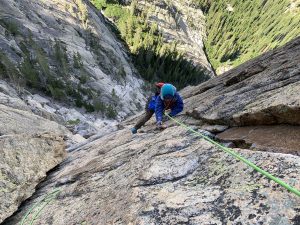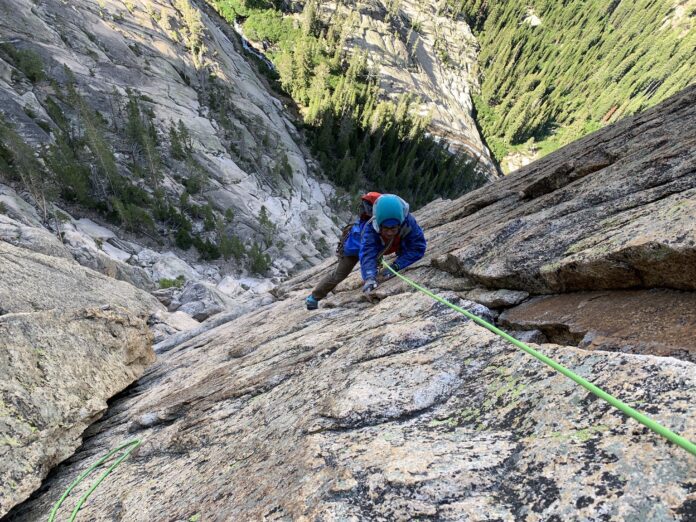By Hayden Seder

The Sun Valley area is the perfect gateway to Idaho’s amazing Sawtooth Mountains: perfect for hiking, backpacking and an assortment of rock climbs for all skill levels.
Sawtooth Mountain Guides has four rock climbs that they recommend above all others for their representation of a cross section of the best climbing routes in the Sawtooths: Super Slabs, the Mountaineers Route on the Elephant’s Perch, the Open Book Route on the Finger of Fate, and Warbonnet.
For those who have never rock climbed, or are just beginners, heading into the wilderness to do an alpine, all-day, multi-pitch climb might sound a little extreme but Super Slabs offers a nice introduction to Sawtooth climbing for very low skill levels. Listed in Climbing magazine as one of the U.S.’s top eight moderate climbs, this 1,000-foot-long climb located behind Redfish Lake takes about two to four hours to climb and features easy to moderate climbing on clean granite.
“Super Slabs is great introductory terrain,” said Erik Leidecker, co-owner of Sawtooth Mountain Guides and an IFMGA/AMGA mountain guide. “We’ve been on the slabs with people aged 5 to 75. With Super Slabs, it’s remarkable that somebody with no previous climbing experience can climb a 1,000-foot route over seven pitches.”
This climb is accessed via a 10-minute boat shuttle and an hour-long hike up Redfish Canyon.
Perhaps the best-known climbing in the area is on the Elephant’s Perch, a rock formation that overlooks Saddleback Lakes and has several climbs of varying difficulty. The Mountaineers Route (III 5.9) is arguably Idaho’s most famous rock climb and considered the ultimate moderate route.
“When Sawtooth granite is good, as it is on these climbs, it’s really, really good,” said Dave Bingham, a local rock climbing legend and author of several Idaho climbing guidebooks. “Most folks seek out the Perch’s easiest climb, the Mountaineers Route. It’s like climbing in Yosemite Valley but in a pristine alpine setting.”
Climbing the Mountaineers Route is best done as a two- or three-day trip to ensure time for swimming, photography, and ample time to make it up the eight pitches to the top. For those looking for moderate climbing and learning new technique, the climb features straight-in cracks, lie-backs, chimneys, face climbing and an exciting warm-up mantle!
For those looking for more of a challenge, the Open Book route on the Finger of Fate demands well-rounded crack and face climbing skills, despite its easy rating of 5.8. Perhaps the most dramatic summit in the Sawtooths, this route is accessed via the Hell Roaring Creek drainage and base camp is set at a 9,000-foot alpine lake. Early starts ensure a one-day ascent.
“The Finger is as classic as it gets: a narrow rock spire split with a perfect corner, ending with an unforgettable exposed summit block, protected by ancient pitons of dubious security,” Bingham said.
The South Face of Warbonnet is located deep in the Sawtooths and offers interesting climbing, a remote location, refreshing lakes and stunning campsites. Getting to this climb is a commitment in itself—an eight-mile approach takes you past Alpine Lake and down into the head of the trail-less Goat Creek drainage. Camp is at either Feather or Bead lakes. The South Face is six to seven pitches of moderate climbing with stunning views the whole way.
“Warbonnet is a classic alpine route to an amazing summit,” Leidecker said.
No matter the climb or the skill level of those climbing, Sawtooth Mountain Guides always teaches their clients the skills needed to get up a climb, such as how to friction climb, the sequencing of multi-pitch climbing, and how to belay.
“A lot of introductory climbing experiences are top-roping where you don’t get more than 50-70 feet off the ground,” Leidecker said. “Climbing with us is somewhat unique.”



